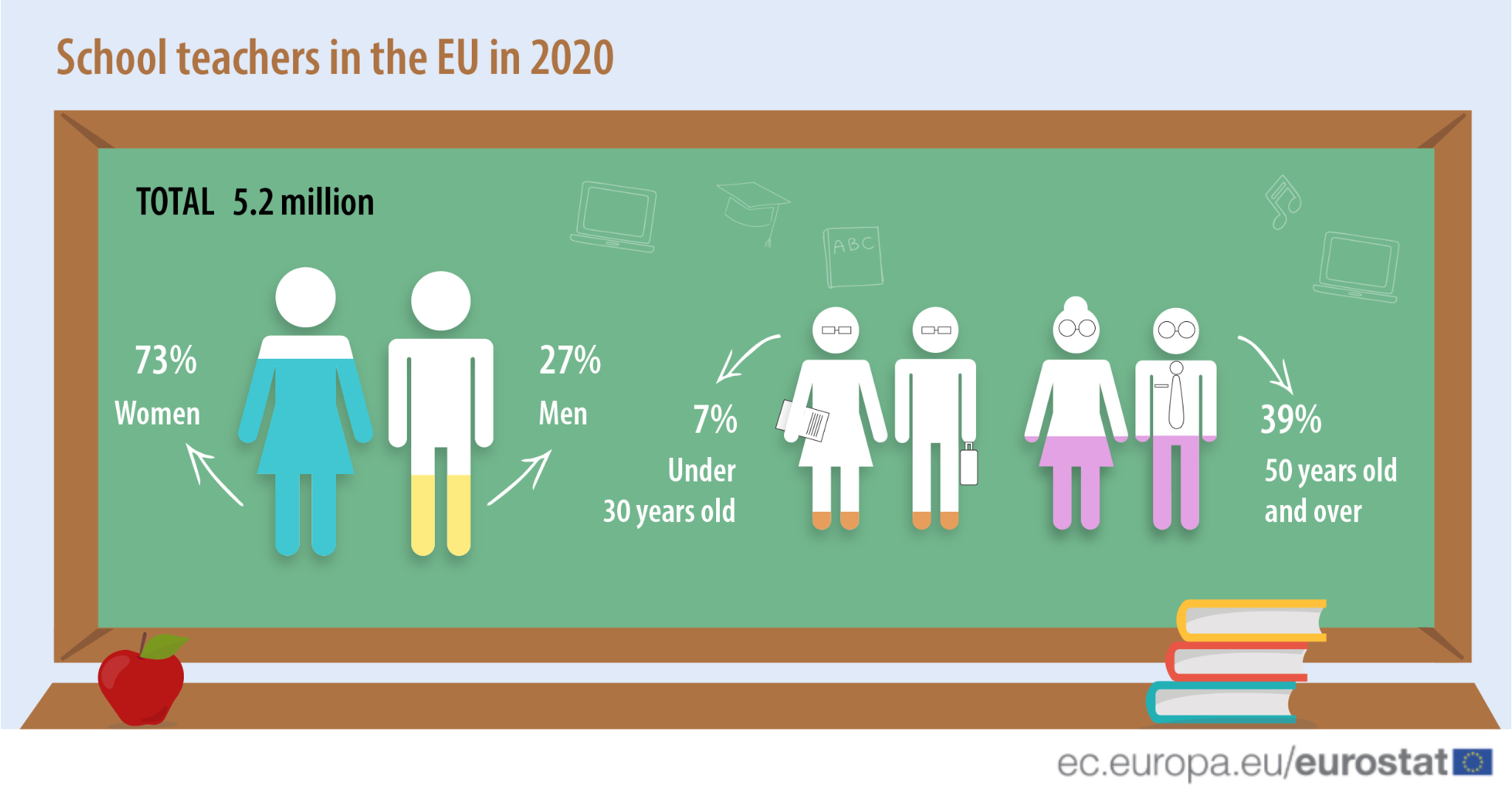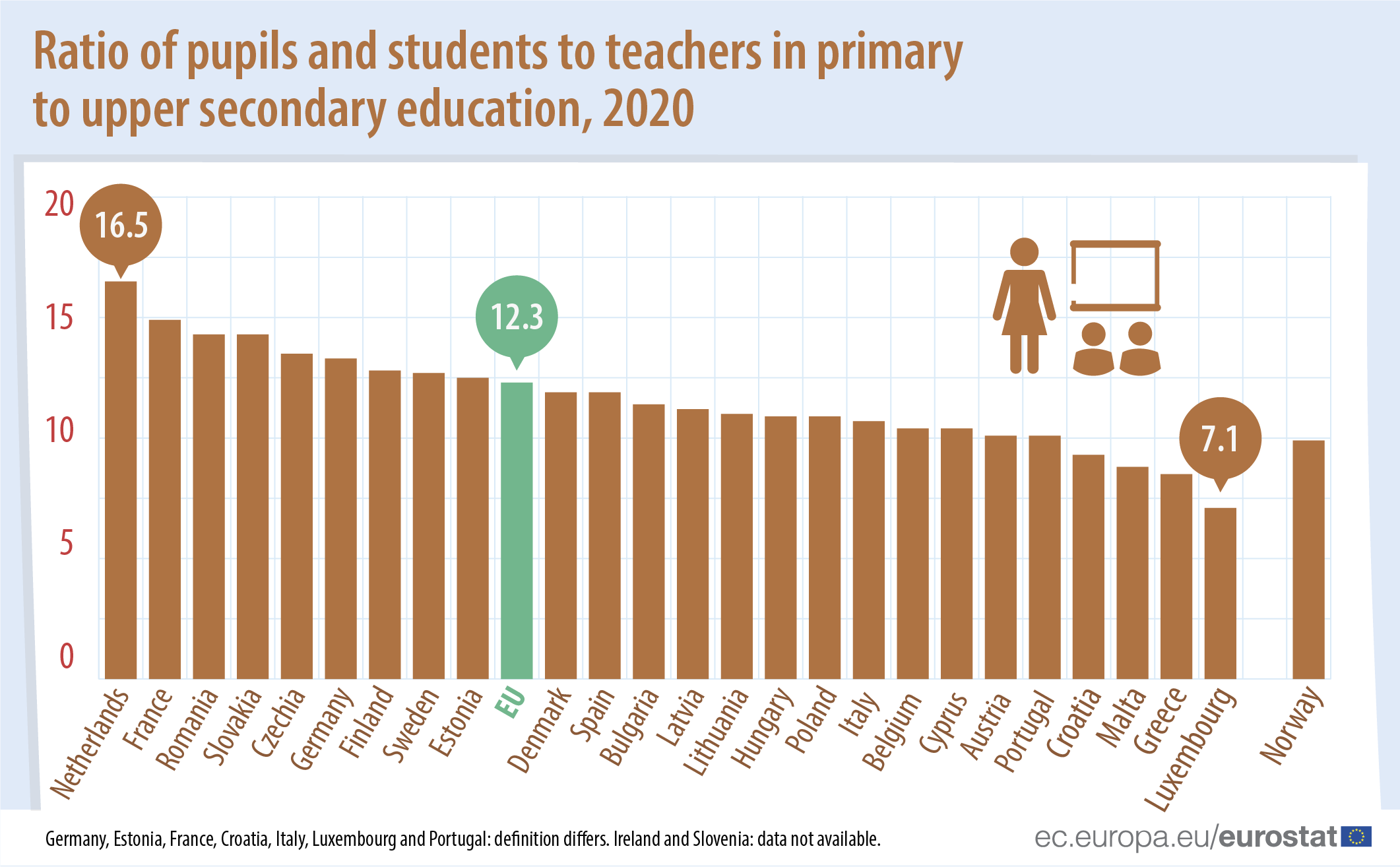In 2020, there were 5.2 million teachers employed in primary, lower secondary and upper secondary education in the EU, (ISCED levels 1-3). To celebrate World Teachers’ Day, we are highlighting the most recent data on teachers.
The teaching workforce
In terms of age, in 2020, 388 000 teachers were younger than 30 years old in the three education levels (7% of the total teaching workforce) in the EU. Meanwhile, 2.0 million teachers were 50 years old or older (39% of the total teaching workforce).
Source dataset: educ_uoe_perp01
Almost half of the male teachers over 50 were teaching in upper secondary education (47%). Less than a fifth of male teachers over 50 were teaching in primary education (17%).
For female teachers over 50 the split was more equal: primary education 40%, lower secondary 32% and upper secondary 28%.
Women accounted for the majority of the teaching workforce. In 2020, 73% of teachers employed in primary, lower secondary and upper secondary education were women (3.8 million).
The average number of pupils per teacher was 12.3 in 2020
In the EU in 2020, the average number of pupils per teacher at the primary, secondary and upper secondary levels - the ratio of pupils and students to teachers - was 12.3.
Source dataset: educ_uoe_perp04
The highest ratios were reported in the Netherlands (16.5 pupils per teacher), France (14.9) and Romania (14.3). Meanwhile, the lowest ratio was recorded in Luxembourg (7.1), followed by Greece (8.5) and Malta (8.8).
For more information:
- Statistics Explained articles on education and training statistics
- Dedicated section on education and training
- Database on education and training
- UNESCO website on world teachers’ day
- Education corner for teachers and students
Methodological notes:
- Primary, lower secondary and upper secondary education: levels defined in accordance with the ISCED classification.
- The data on teachers and pupils used for the calculation is expressed in full-time equivalent. The comparability of pupil-teacher ratios across countries may be affected by differences in class size by grade and in the number of hours taught, as well as different school spatial distribution, practices on school shifts and multi-grade classes.
- Ireland and Slovenia: data not available on the ratio of pupils and students to teachers.
- Germany, Estonia, France, Croatia, Italy, Luxembourg and Portugal: definition differs with regard to the ratio of pupils and students to teachers. Please see the metadata.
To contact us, please visit our User Support page.
For press queries, please contact our Media Support.



